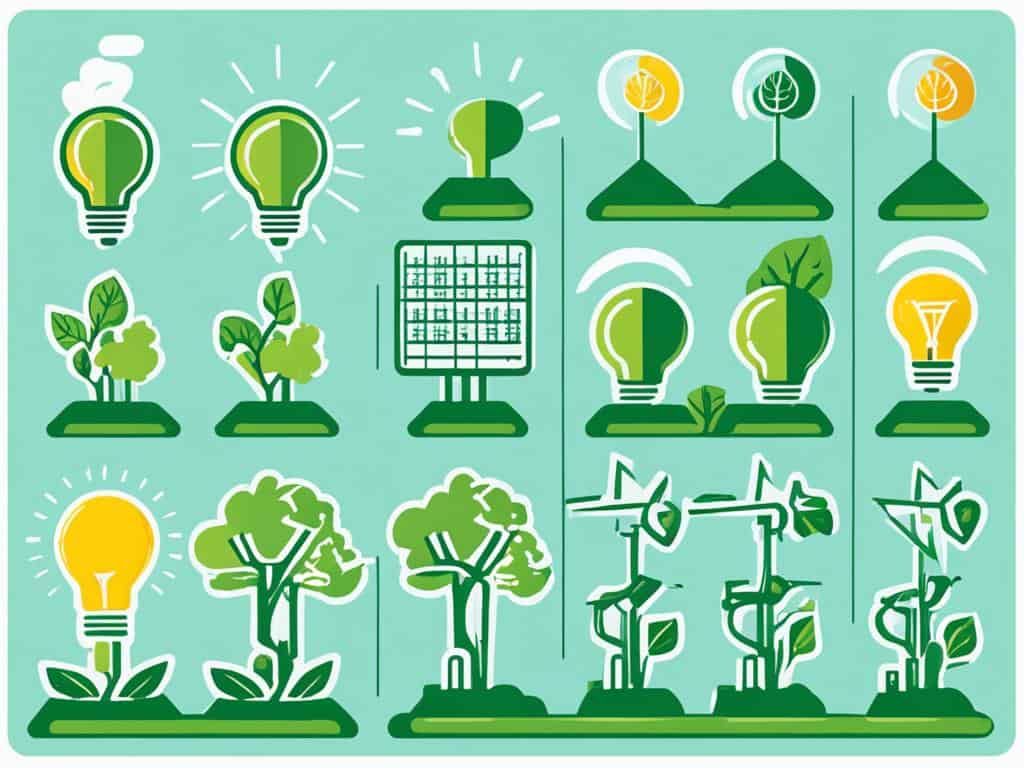Understanding the Cost of 1 Megawatt of Electricity
Explore the intricacies of electricity pricing in India with our in-depth analysis of the cost of 1 megawatt of electricity across varying factors.

In India, there’s a lot of talk about solar energy. But what’s the cost of 1 megawatt of electricity from the sun? As we seek cleaner energy, many are choosing solar power, with Fenice Energy leading the way. Looking at the average price of 1 megawatt electricity through solar panels might make you pause. Yet, looking closer shows this investment’s value over time. Running a system that produces about 4,000 kWh daily means knowing the costs, the technology, and the financial benefits.
Setting up a solar power plant has many details and costs that can seem daunting. In India, creating a solar power plant for the equivalent of 1 MW electricity price involves land, equipment, and smart design. Fenice Energy highlights the steps involved, from solar farms to the parts that convert sunlight to energy, and what this means for the megawatt electricity cost in a market that wants clean energy.
Let’s look at the real costs of making a 1 MW solar power plant. Also, selling extra electricity back to the grid can save money and even make money. The dream of affordable, renewable energy in India is real, thanks to Fenice Energy. But what’s the electricity cost per megawatt?
Key Takeaways
- Estimating the cost of 1 megawatt of electricity via solar means considering multiple factors from installation to efficiency.
- Learn how Fenice Energy employs strategic design and technology to maximize solar energy output and minimize costs.
- Understand the workings of net metering mechanisms and how they impact the overall megawatt electricity cost.
- Discover the cost-benefits of going solar and how 1 MW systems can lead to potential earnings in India.
- Unveil the role of strategic planning in cutting down the electricity cost per megawatt for a more sustainable future.
The Basics of 1 Megawatt Solar Power Plants
India is moving forward with clean energy. It’s important to understand a 1 megawatt (MW) solar power plant. This includes its parts, space needs, and energy output. This knowledge helps businesses and raises awareness of India’s energy scene. Let’s explore these power plants’ components, the space they need, and their energy production.

What Constitutes a 1 Megawatt Solar Power Plant?
A 1 MW solar power plant’s core is its solar panels. These panels capture sunlight to create clean electricity. They work with a strong mounting structure and a high-capacity solar inverter. Together, they make solar energy possible for big projects. Solar batteries may also be added. They keep energy flowing even without direct sunlight.
Energy Output and Space Requirements
For a 1 MW solar power plant, companies need 4 to 5 acres of land. This setup can make around 4,000 kWh of electricity each day. That’s 1,20,000 kWh every month and 14,40,000 kWh each year. While costs vary, the energy made pays off over time. It helps cover the cost of 1 MW of electricity in the long run.
Components and Their Role in Energy Generation
The cost for 1 megawatt electricity shows the system’s scale and component quality. Top-notch solar panels change sunlight into electric power. An inverter then changes this DC power into AC power, which businesses can use. Things like charge controllers and optional solar batteries improve the system’s efficiency. Ultimately, the price of 1 MW electricity depends on the components’ quality. Better materials may cost more but lead to higher efficiency.
Looking at the 1 megawatt energy cost or investment’s sustainability, every part of a solar power plant pushes us toward clean energy. Fenice Energy is dedicated to offering eco-friendly options. This helps businesses in India move towards a greener future.
Cost Breakdown and Factors Influencing the Price
Looking into the cost of 1 MW of electricity from solar power calls for understanding many factors. Fenice Energy, a leader in clean energy solutions, says the cost in India ranges from Rs 4 to 5 crores for 1 MW solar installations. The price difference comes from whether you choose monocrystalline or polycrystalline solar panels. Advanced inverter technology that boosts energy conversion also plays a part in the final cost.
The solar power plant type affects the cost too. On-grid systems are cheaper at first because they don’t need batteries. But off-grid and hybrid systems do use batteries, making them pricier upfront. However, they provide consistent power. The installation location matters as well. Places with more sunshine may need a smaller system. Fenice Energy applies its 20+ years of experience to choose the right equipment and installation approach for each location.
Businesses should also think about the costs of running their solar power plants. Although there are no subsidies for this size, there are tax advantages and the chance to sell extra energy back to the grid. Fenice Energy suggests the Ornate InRoof for saving space and keeping things looking good. This makes investing in a 1 MW solar power plant a choice for long-term benefits and sustainability, beyond just the initial cost of electricity.


